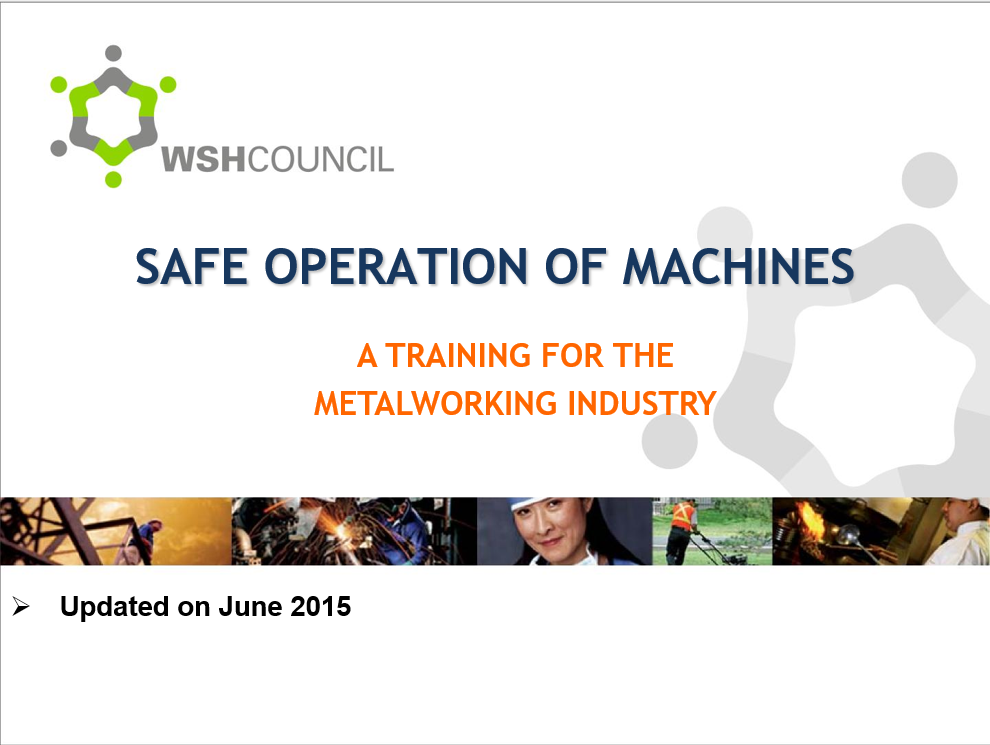In this course, you will gain the essential skills and knowledge to work safely during the installation, maintenance, and replacement of escalators and moving walks. You will become proficient in implementing good record-keeping practices and effective communication procedures critical for both routine and non-routine maintenance work. By the end of this course, you will be able to describe the roles and responsibilities of different stakeholders, such as the escalator owner and a competent maintenance person, ensuring compliance with safety guidelines. This will prepare you to support successful collaborations and maintain safety standards in any project associated with these devices.
PEER Course Application
-
-
this course aims to identify the importance of safe spaces for conversations around mental well-being and explain how they help reduce stigma, encourage open discussions, and support employees in seeking help.
-
This course for Lifting Supervisors is developed to provide greater practical guidance for lifting supervisors to ensure safe supervision of lifting work at the workplace. The course not only provides guidelines on the roles and responsibilities but also information on common hazards associated with lifting, Lifting Plans, Risk Assessment (RA), Permit-to-Work (PTW) System and Safe Work Procedures (SWP), and recommended rigging and crane signals.
-
Available courses
Mental health is essential for workplace productivity and well-being. This course explores how digital tools—such as wearables, biomarker apps, virtual therapy, and analytics—can support employees’ mental health. You will learn how to identify workplace stressors, select the right tools, and implement them effectively while ensuring privacy and leadership support. Real-world examples from different industries will illustrate successful applications. This course is ideal for HR professionals, managers, and leaders looking to enhance workplace mental health with digital solutions.

In this course, you will delve into the critical aspects of safeguarding against falling objects within a workplace environment. By exploring the significance of this prevalent hazard, you will understand how effective management and strategic planning can foster a culture of safety. Equipped with risk assessment techniques, you will assess hazards and adeptly prioritize control measures to mitigate risks. This holistic understanding will empower you to apply practical safety solutions tailored to various workplace settings.

In this Design for Safety course, you embark on a journey to master the GUIDE Process, empowering you to effectively collaborate and participate in identifying and managing design-related risks. By applying DfS tools, you will enhance safety from the inception to completion of construction projects. You will gain a comprehensive understanding of how tools such as RAG lists and hazard-based checklists play a crucial role in mitigating risks and ensuring safety throughout the design process.

In this course, Noise and Hearing Conservation: A Training for Metalworking Industries, you will immerse yourself in understanding how to effectively manage noise control measures within your metalworking workspace. By the end of this journey, you will have the skills to implement strategies like damping, using silencers, and enclosing machines, as well as setting up administrative controls that address specific noise sources. Throughout the course, you will also gain valuable insights into the health impacts of excessive noise exposure, including the risk of noise-induced hearing loss and other related health issues, empowering you to create a safer and more productive working environment.

In this Workplace Safety and Health for Woodworking course, you will gain essential knowledge to enhance safety within your woodworking environment. You will explore the hierarchy of control measures, empowering you to assess and mitigate mechanical and electrical hazards effectively. By analyzing real-life case studies, you will be equipped to apply these control measures confidently, ensuring a safer and healthier workspace.
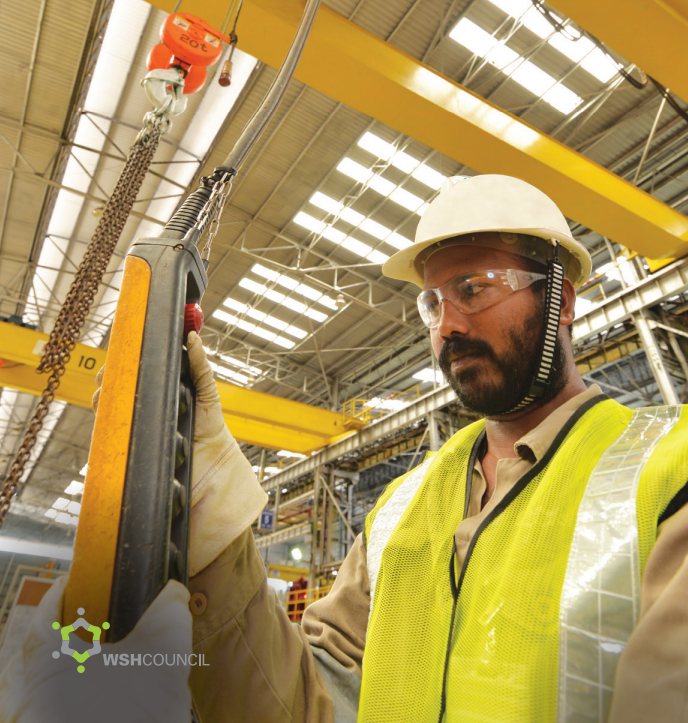
In the Safe Use of Overhead Travelling Cranes, Gantry Cranes, Jib Cranes, and Hoists course, you will gain valuable insights into crucial rigging practices necessary for safe crane operations. By the end, you will be capable of evaluating load weights and selecting the appropriate lifting gear, ensuring the stability and safety of every lift. You will also learn to describe common accidents associated with crane operations, like overloading, and develop a keen awareness to prevent such incidents, contributing to a safer work environment.

In Set Up A Peer Support System, you will learn how to develop and implement effective strategies that enhance the visibility and confidentiality of your organization's In-house Helpline. By the end of the course, you will be equipped to promote quick access to mental health support resources within your workplace. You will also deepen your understanding of the role and importance of peer support networks in fostering mental well-being in a professional setting.

In the Encourage Self-Care course, you will gain the skills to incorporate exercise and recreational activities into your weekly routine, both on-site and virtually, promoting lasting physical and mental health. By the end of this course, you will be well-versed in explaining the numerous benefits that regular recreational activities can have on your overall well-being. Get ready to explore practical ways to enhance your quality of life through the power of self-care.
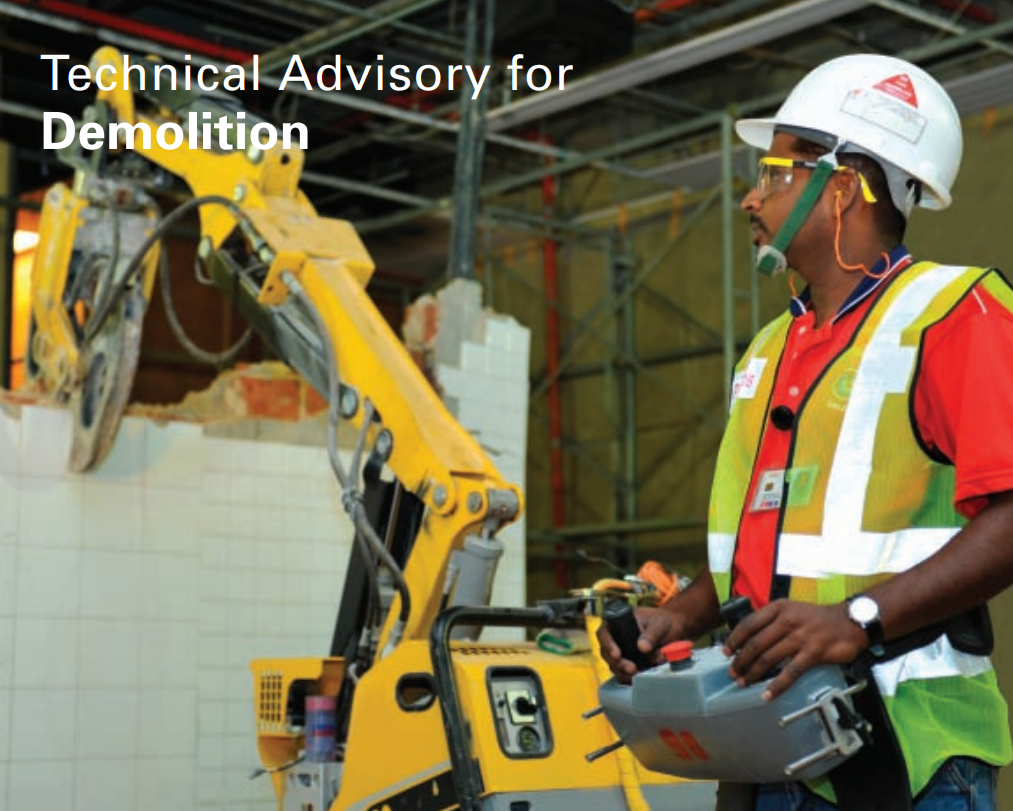
In this Technical Advisory for Demolition course, you will gain the skills necessary to execute a comprehensive risk assessment for demolition projects. By the end, you will be adept at identifying potential hazards and implementing effective safety measures and Safe Work Procedures to manage these risks effectively. You will also be able to explain the legislative requirements, including compliance with the Workplace Safety and Health Act and related regulations, ensuring that all demolition activities adhere to workplace safety standards.

Welcome to the course Creating Healthier, Safer, and More Productive Workforce. Here, you will explore effective strategies to enhance employee well-being through initiatives like BMI maintenance incentives and smoking cessation programs. By the end of this course, you should be able to apply these strategies, promoting physical health while simultaneously driving business success. You will gain insights into how prioritizing employee health can significantly reduce absenteeism and boost overall productivity within your organization.

This course covers safe lifting operations, focusing on risk management, proper lifting techniques, equipment usage, and compliance with safety regulations. It aims to enhance workplace safety and prevent accidents in lifting activities.

In the Guide of Lifting Supervisors course, you will gain the skills to select the appropriate rigging methods and lifting equipment tailored to specific load characteristics and environmental conditions. By immersing yourself in real-world scenarios, you will enhance your safe operational practices. You will also learn to describe common hazards encountered in lifting operations, including unsecured loads and structural failures, while understanding the importance of risk assessment and permit-to-work systems in mitigating these dangers.
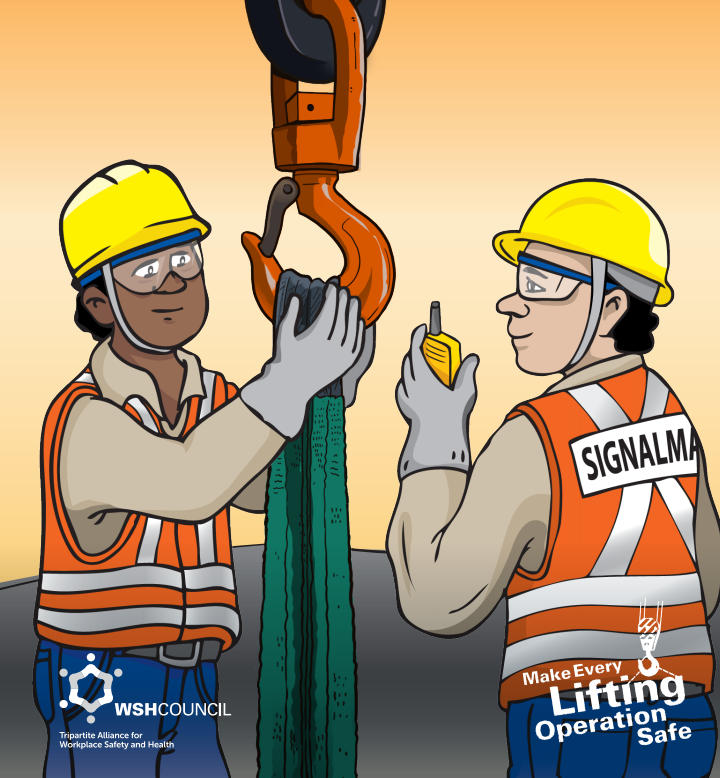
In the Worker's Safety Guideline for Rigger and Signalman course, you will master the essential skills needed to ensure safety in crane operations. By the end of this course, you will confidently apply the correct use of personal protective equipment (PPE), including helmets, identification tags, reflective vests, gloves, and safety boots for each lifting task. You will also be able to identify safe rigging practices by distinguishing between proper and improper methods, such as the use of choker hitches, shackles, and hooks, while understanding the implications of poor rigging techniques.
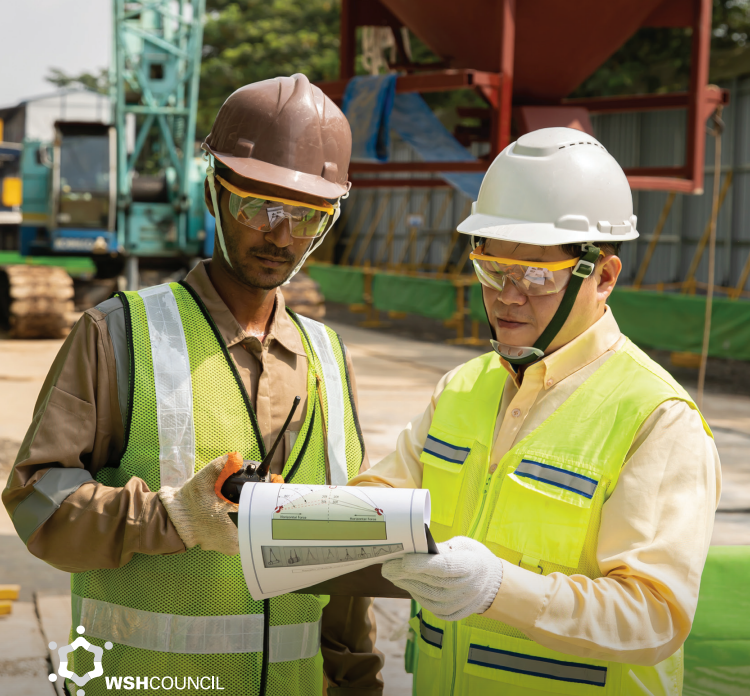
In the Lifting Plan Development course, you will learn how to use lifting equipment and rigging techniques. You'll gain the skills to confidently calculate and check the Safe Working Load (SWL) for different tasks. By the end of the course, you’ll know how to safely lift heavy objects, like transformers, by understanding key factors such as load radius. You’ll also learn how to account for physical and environmental factors like ground conditions and weather, helping you stay alert and prevent accidents during lifting operations.
In this course on Understanding Safety Protocols in Lorry Crane Operations, you'll embark on a learning journey to become proficient in creating a thorough Lifting Plan tailored to your specific workplace. You'll explore the important process of selecting the right equipment and assigning roles to your team, helping to make sure that operations run smoothly and safely. By the end of this course, you’ll gain valuable insights into the importance of safety devices and procedures, such as stability control mechanisms and emergency protocols, all designed to prevent accidents and ensure that your tasks are carried out successfully.

In the "Working Safely at Heights" course, you will develop the expertise to oversee the critical permit-to-work system, ensuring all safety protocols are met when dealing with potential fall hazards. You will gain a thorough understanding of the components and purpose of a Fall Prevention Plan, enhancing your ability to supervise and implement it effectively on-site. By mastering risk management strategies and emergency response preparedness, you will be equipped to ensure a safe working environment and lead with confidence in high-risk situations.
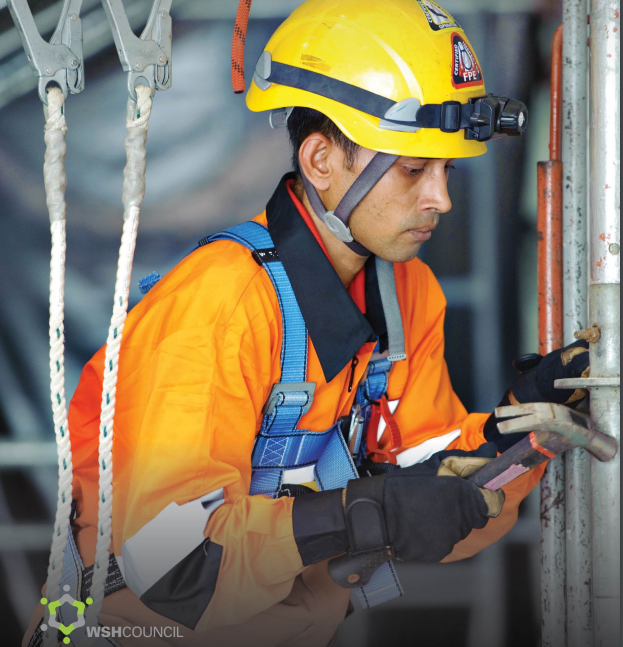

In the CEO’s Guide to Work at Height course, you will delve into the intricate theories and concepts critical to navigating work-at-height scenarios within corporate structures. By exploring the significance and implications of current challenges and solutions, you will develop the analytical skills needed to recommend effective strategic plans. This course is designed to equip you with the knowledge to address potential challenges, ensuring safety and efficiency in high-risk work environments. Prepare to transform complex information into actionable strategies that enhance both safety and corporate operations.
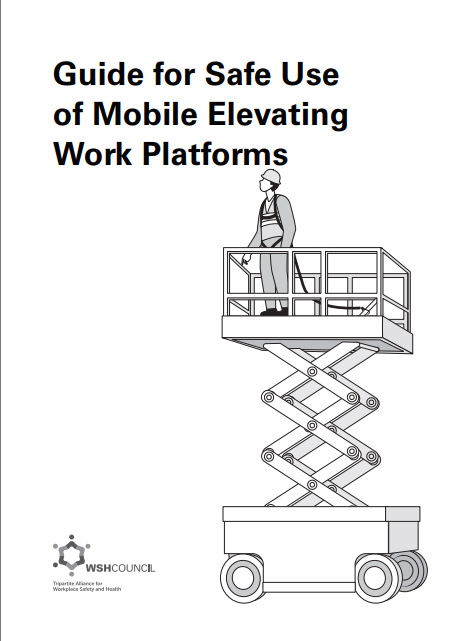
This course provides comprehensive guidelines on the safe operation of Mobile Elevating Work Platforms (MEWPs), including boom lifts and scissor lifts. Participants will learn about MEWP hazards, risk assessments, and best practices to ensure workplace safety. The course covers pre-use inspections, operational safety measures, and post-use protocols, emphasizing hazard prevention and emergency preparedness.
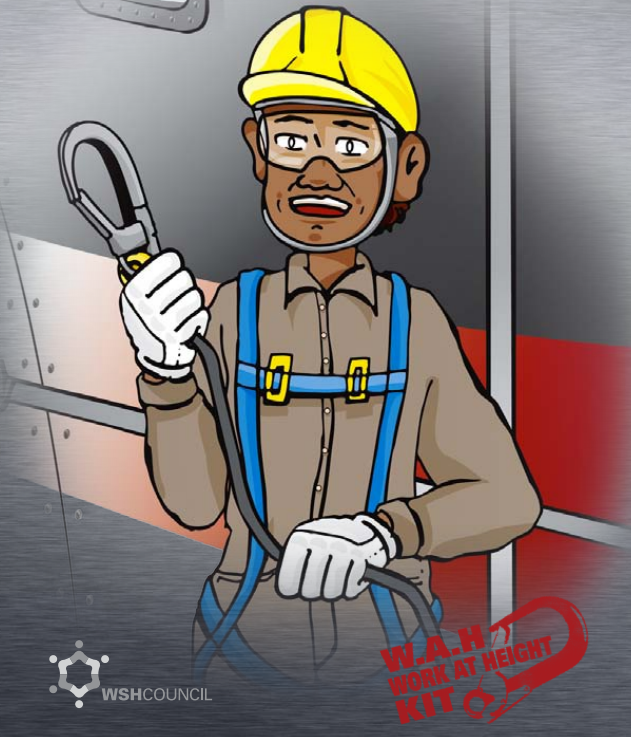
In the Worker’s Safety for the Marine Industries course, you will gain essential knowledge and skills to enhance your safety when operating at heights. By the end of this course, you will be equipped to demonstrate the proper procedure for securing a safety harness to an anchorage point with an independent lifeline, a critical competence to prevent falls and ensure your personal safety. You will learn to describe not only the process but also the importance of using these safety measures effectively in your day-to-day work within marine environments.
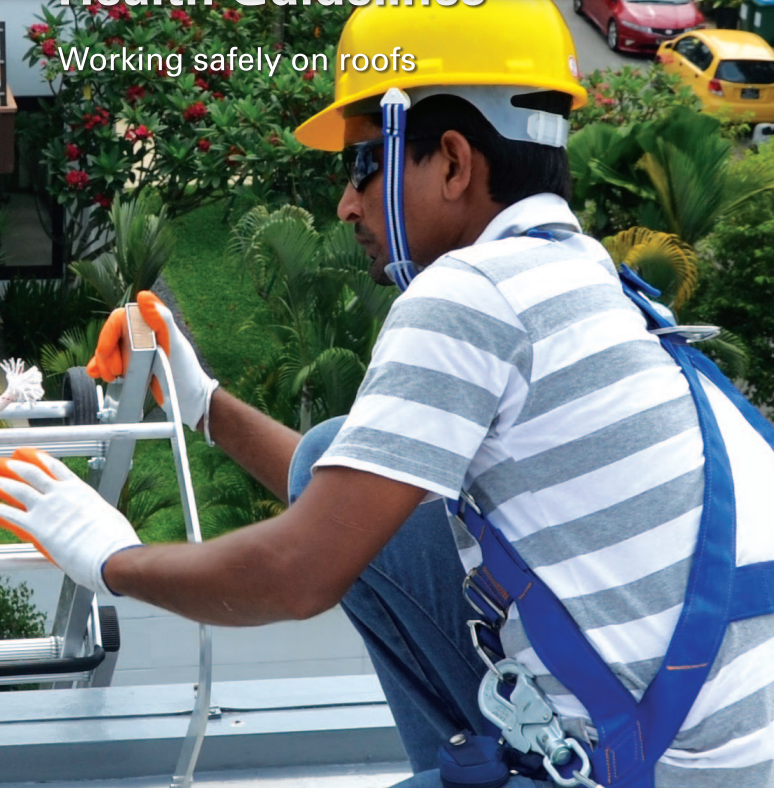
In Working Safely on Roofs, you will acquire essential knowledge to enhance your safety practices by understanding established safety regulations. By the end of this course, you will be equipped to develop and execute a comprehensive Fall Prevention Plan that effectively manages identified risks encountered during roofing work. You will be able to explain the key components of a Fall Prevention Plan and discuss how each component plays a vital role in managing fall risks, ensuring a safer working environment on roofs.

In the Supervisor's Guideline of Work at Height course, you will gain the critical skills to develop and implement safety inspection routines. By the course's conclusion, you'll ensure that scaffolds, ladders, and all other area-specific safety equipment meet rigorous safety standards, allowing work to commence safely. Moreover, you'll delve into your responsibilities as a supervisor, mastering the art of performing risk assessments and conducting regular safety inspections in environments where working at height is a necessity.
Forklifts play a vital role in the logistics and transportation, construction, marine, and manufacturing industries. They are useful when heavy loads need to be handled and transported easily and quickly. However, if they are mishandled or used inappropriately, property damage, serious injuries or even fatalities can occur.
The unsafe use of forklifts can cause incidents in the workplace. Some examples of unsafe situations include: using untrained personnel to operate forklifts, poor workplace traffic management, fatigued workers and adverse ground conditions. These unsafe situations could be improved with proper training and active management involvement.
This course provides practical guidance for industry stakeholders to enhance their understanding of safe operation of forklifts at their workplaces.

In this course, you will delve into the essential principles of safe loading and unloading on vehicles, focusing on the logistics and transport sector. By the end of this course, you will be equipped to apply your understanding of roles and responsibilities in real-world scenarios, ensuring cargo is securely managed to prevent accidents. You will also gain valuable insights into the significance of secure packaging and how collaborative efforts among stakeholders can enhance safety standards in transporting cargo.
As e-commerce and online food delivery have surged, delivery operations have shifted from traditional motor vehicles to include bicycles, power-assisted bicycles (PABs), personal mobility devices (PMDs), and personal mobility aids (PMAs). While these alternatives offer flexible and cost-effective solutions, their irresponsible use can lead to injuries for pedestrians, other road users, and the riders themselves. This training course will equip participants with essential knowledge and best practices to ensure the safe operation of these mobility devices, emphasizing responsible usage and safety protocols to protect all road users and create a safer delivery environment.

This course focuses on improving safety for delivery riders and drivers. It covers providing feedback on safe driving, rewarding good behavior, and defensive driving techniques. Participants will learn how to handle heavy loads safely, split deliveries, and manage weather-related delays. The course helps ensure a safer and more efficient work environment for all riders and drivers.

In the Workplace Traffic Safety Management course, you will gain the knowledge needed to effectively implement a Workplace Traffic Management Plan tailored to your specific work environment. You'll explore essential safety and health policies that pertain to your workplace, enabling you to identify and mitigate risks associated with workplace traffic incidents. By the end of this course, you will be equipped to enhance safety measures and ensure a safer working environment for everyone involved.
In this course, Guide to Noise Control in the Music & Entertainment Industry, you will embark on a journey to effectively mitigate noise hazards within entertainment venues. By understanding and discussing the legal requirements related to noise exposure, including the Workplace Safety and Health Act, you will gain a comprehensive grasp of the regulatory framework that supports noise control initiatives. By the end of your learning experience, you will be equipped to implement recommended noise control measures, such as using acoustic materials and sound limiters, to ensure safer and compliant entertainment environments.

Welcome to the Hearing Conservation Programme course, where you will explore vital strategies to protect hearing health in the workplace. Throughout this course, you will learn to identify different types of noise hazards commonly found in work environments and understand their potential effects on employees' auditory health. By the end of this course, you will be able to apply effective noise control measures, utilizing both engineering and administrative strategies, to reduce noise risks and enhance safety for everyone in your workspace.

In this course, you will delve into the intricacies of Workplace Safety and Health (WSH) obligations, tailored specifically for shipmasters and contractors involved in anchorage operations. As you progress, you will learn to identify potential hazards and propose effective control measures to manage risks successfully. By the end, you'll possess a strong understanding of the responsibilities and communication protocols mandated by the WSH Act to foster effective cooperation among shipmasters, contractors, and crew.

In this course, Supervisor’s Guideline for the Marine Industries, you will gain the essential skills to implement and supervise effective fall prevention measures in marine environments. By the end, you will be able to conduct thorough equipment checks and ensure the correct use of personal protective equipment, leading to improved safety compliance on decks and scaffolding. You will also understand and summarize the critical areas needing supervision, and be able to explain why these spaces are often susceptible to falls, based on standard safety guidelines in the marine industry.
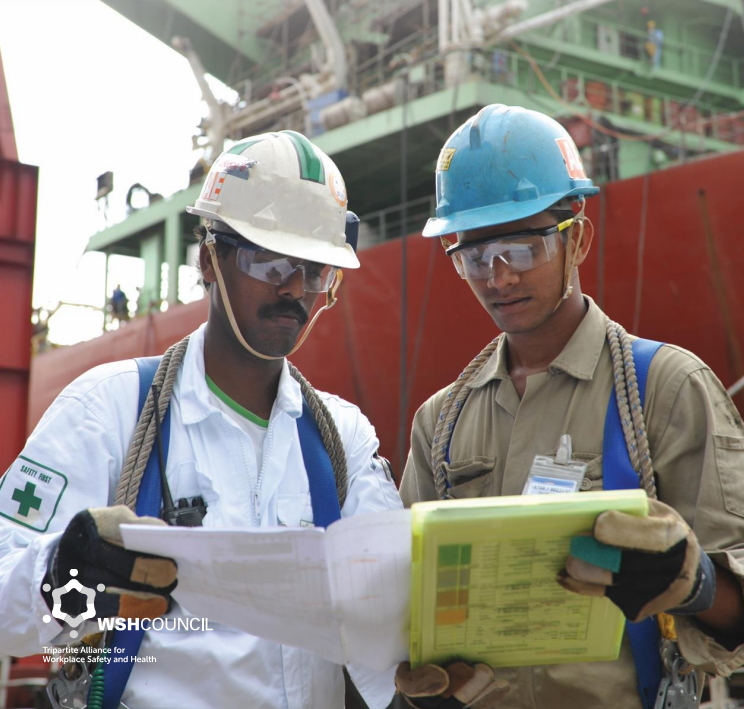
In this training course on WSH Management System for the Marine Industries, you will learn how to implement a Workplace Safety and Health Management System (WSHMS) tailored for shipyard environments. By the end of the course, you'll be ready to use industry-specific templates and guidelines to ensure compliance with safety regulations. You will also understand the key components of a WSHMS, which are essential for maintaining high safety and health standards in the marine industry.
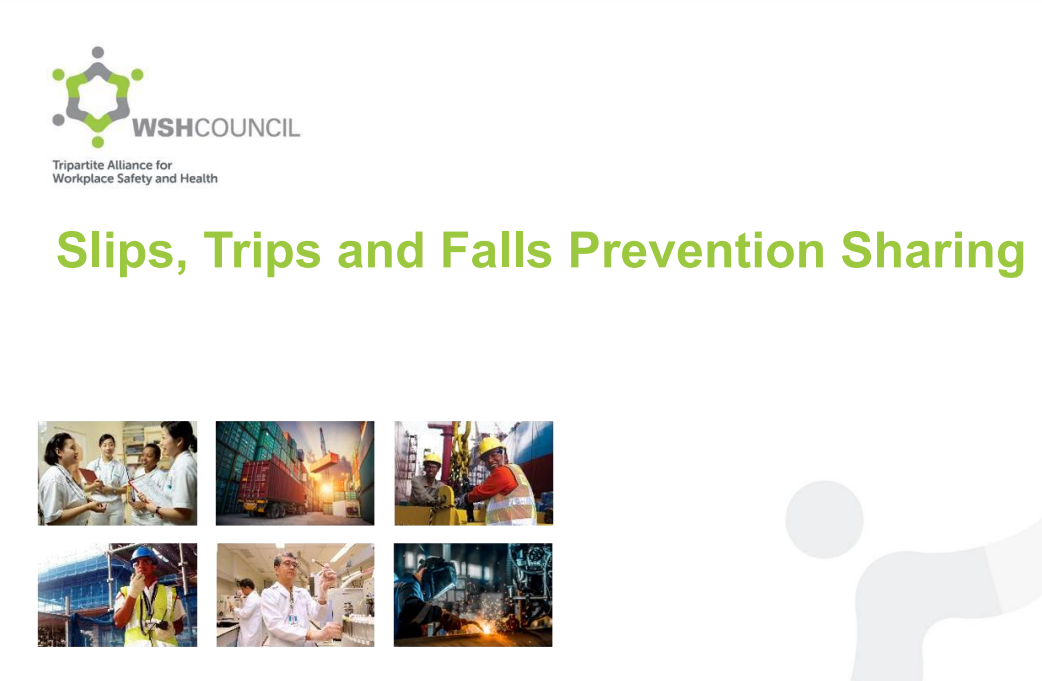
In the Slips, Trips and Falls Prevention course, you will be equipped with the essential knowledge to enhance workplace safety by recognizing and addressing common hazards. You will explore and understand the frequent causes of slips, trips, and falls, including the underlying environmental and human factors. By the course's conclusion, you will be prepared to apply effective strategies, ensuring that your walkways remain clutter-free and well-lit, ultimately reducing risks and enhancing safety in your workplace.

Welcome to the Flammable Materials course where you will gain the essential skills to ensure safety in your workplace. By the end of this course, you will be equipped to conduct thorough fire risk assessments, identify potential fire hazards, and evaluate their severity and likelihood. You will learn how to implement effective risk control measures, enhance workplace safety, and comprehend the principles of safe storage and handling of flammable materials, including the importance of proper separation distances and hazard communication.

In this course on the Globally Harmonised System of Classification and Labelling of Chemicals (GHS), you will gain the expertise to utilize Safety Data Sheets (SDS) for effective hazard communication regarding various chemicals. By the end of this course, you will be equipped to incorporate the latest regulatory changes and new information into your work. You will understand how to interpret hazard classes and classification criteria, empowering you to identify and communicate chemical risks efficiently and accurately.

In this course on the Waste Management Sector, you will gain essential insights into implementing effective heat stress prevention strategies while mastering the correct usage of personal protective equipment (PPE). By the end, you will be equipped to describe proper procedures for using PPE in waste management settings, particularly in high-risk situations like exposure to hazardous substances and extreme temperatures. Enhance your understanding of workplace safety and be prepared to tackle the unique challenges of the waste management industry.

Dive into the complex world of toxic industrial waste treatment and empower yourself with the knowledge to make a real difference in environmental safety. In this course, you will learn to effectively implement critical chemical treatment processes, such as reduction/oxidation and neutralization, within industrial settings. By the end, you will be able to explain the role of neutralization and precipitation in transforming waste properties, ensuring your ability to mitigate environmental impacts while adhering to stringent safety standards.

This training course provides comprehensive information on best practices for handling chemicals in laboratories, including hazard identification, risk assessment, safe storage and disposal, and emergency preparedness. It is designed to help laboratory managers, supervisors, and workers implement effective safety measures to prevent accidents and health hazards. Laboratories can minimize risks, protect workers, and maintain a safe and compliant work environment.

This course equips participants with essential knowledge to identify hazardous materials, understand associated risks, and apply effective control measures. Learn to interpret Safety Data Sheets (SDS), use appropriate personal protective equipment (PPE), and implement proper disposal and hygiene practices. The course also covers critical first aid procedures for chemical exposure to ensure workplace safety and health compliance.
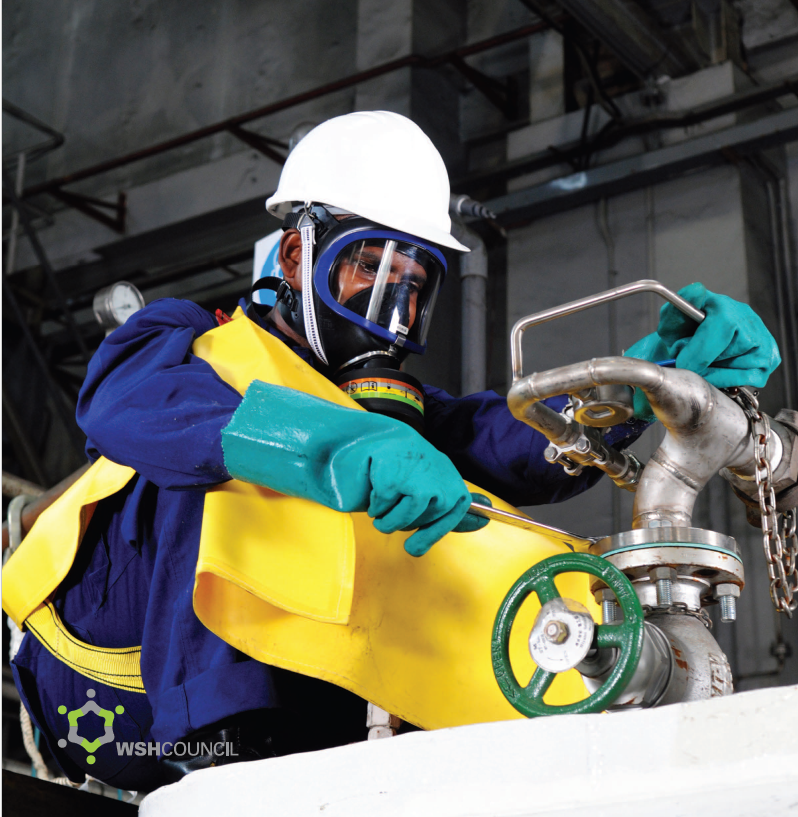
In the Management of Hazardous Chemicals Programme, you will develop the capacity to effectively manage the selection and procurement of hazardous chemicals, aligned with safety commitments and risk assessment incorporation. By the conclusion of this course, you will be equipped to demonstrate procedures ensuring chemical hazards are evaluated in accordance with established guidelines. Additionally, you will gain crucial knowledge on the significance of maintaining and accurately referencing a Register of Chemicals, which is essential for ensuring chemical safety and meeting regulatory compliance.
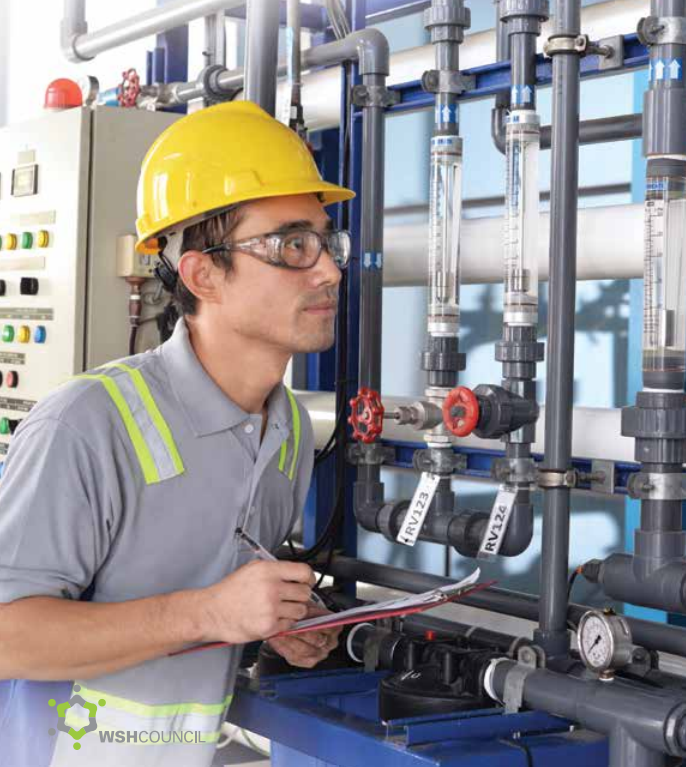
In this course on Process Hazard Analysis (PHA), you will learn how to apply step-by-step procedures to conduct effective PHA, enabling you to identify and manage hazards in your work environment. By the end of the course, you will understand the differences between process safety and personnel safety, and how these concepts apply to low-frequency, high-consequence events. Armed with this knowledge, you will be able to ensure compliance with safety standards, ultimately creating a safer and more efficient workplace.

In this course, Guidelines on Workplace Housekeeping, you will discover the essential principles of maintaining a clean and organized work environment, which is crucial for enhancing safety and productivity. By exploring the 5S (Sort, Straighten, Shine, Standardize, Sustain) methodology, you'll learn how to effectively organize and sustain an efficient workplace. Through practical insights and techniques, you'll be equipped to prevent potential health hazards and contribute to a harmonious work setting.
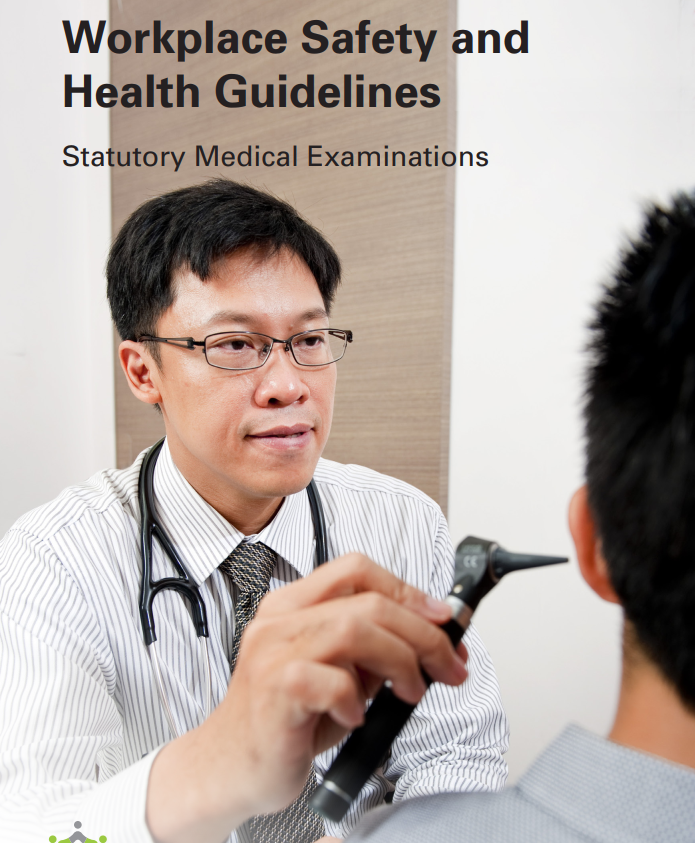
This course will provide learners with a comprehensive understanding of Statutory Medical Examinations under the Workplace Safety and Health (WSH) Regulations in Singapore. It focuses on the roles and responsibilities of Designated Workplace Doctors (DWDs) in conducting medical examinations for workers exposed to specific occupational hazards such as arsenic, asbestos, benzene, lead, noise, silica, and more. Learners will explore the legal framework, including the WSH Act and Medical Examinations Regulations, and gain knowledge on the process of conducting these examinations, ethical considerations, documentation, and reporting requirements.

In the "Landscape and Horticulture Management" course, you will master the skills necessary to ensure safety in landscaping operations, especially when working at heights. By the end of this course, you will be equipped to implement personal protective equipment protocols effectively and conduct toolbox meetings to maintain compliance with workplace safety regulations. You will gain insight into hazard identification processes critical in managing landscapes and horticultural environments, empowering you to recognize and describe common workplace hazards specific to park maintenance and tree management activities.

In this course, you will gain the expertise needed to apply Workplace Safety and Health (WSH) regulations within healthcare environments, ensuring a safe and compliant workplace for both staff and patients. You will delve into critical subjects like risk management and environmental safety, enhancing your ability to uphold essential safety standards. By the end of the course, you will also appreciate the significance of emergency preparedness and articulate the components of an effective emergency response plan customized for healthcare settings.

In this course, Procurement in the Construction Industry, you will explore how procurement strategies can be leveraged to enhance workplace safety and health (WSH) standards. By the end, you will be equipped to integrate these strategies into crucial business decisions, extending from the inception to the construction stages of a project. Additionally, you will gain knowledge about the pivotal role procurement plays in reinforcing WSH outcomes, by embedding key safety guidelines into various project phases.
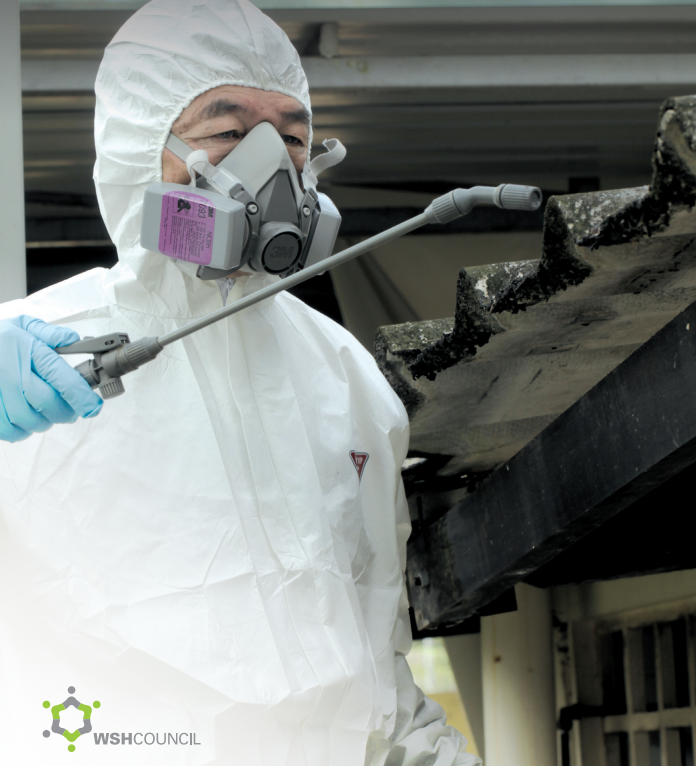
In the Management and Removal of Asbestos course, you will develop essential skills to safely manage asbestos-containing materials (ACMs) within your work environment. By learning to implement effective identification and assessment techniques, you will enhance workplace safety for yourself and others in construction and related industries. You will gain knowledge to describe the different types of asbestos and distinguish between friable and non-friable ACMs, understanding their unique characteristics and potential health impacts.

In this course, you will gain the knowledge and skills necessary to apply the guidelines provided by the Workplace Safety and Health Council. You'll learn how to identify potential occupational disease risks in your work environment and implement strategies to mitigate these risks effectively. By the end of this course, you will be able to explain common occupational diseases, including their symptoms and risk factors, while ensuring compliance with the Workplace Safety and Health Act.
In Don't Ignore Everyday Risks at Work: A Guide to Workplace Safety and Health, you will learn to recognize and handle common workplace hazards effectively. By the end of this course, you will be skilled in describing and implementing a basic incident reporting procedure, crucial for maintaining a safe work environment. Understanding and applying these strategies will allow you to analyze trends and contribute to enhanced safety measures in your workplace.

In this course, Anchorage, Lifelines and Temporary Edge Protection Systems, you will delve into the essential safety tools crucial for working at heights. By the end, you will be equipped to implement effective risk assessment techniques as stipulated in the WSH Guidelines, prioritizing the installation of temporary edge protection systems to enhance safety for construction and logistics teams. You will gain a comprehensive understanding of the various types and functionalities of anchors, lifelines, and edge protection systems, and learn how these components work together to maintain a secure working environment.
In this course, Guide to Workplace Safety and Health for Management Corporation Strata Title, you will gain the skills necessary to assess and improve workplace safety within strata titled management environments. By the end of this course, you will be equipped to apply safety regulations and procedures to evaluate the compliance level of existing safety measures. Additionally, you will understand the historical development and current status of safety compliance measures, enabling you to identify critical factors that influence workplace safety protocols.
In this course, Confined Space Safety Guideline for Supervisors and Workers, you will learn how to properly identify confined spaces at your worksite to ensure adherence to safety standards and prevent unauthorized entries. By the end of this course, you will have a clear understanding of the essential definitions and characteristics that make confined spaces hazardous. Additionally, you will explore the fundamental principles and historical development of safety standards associated with working in confined spaces. This knowledge will empower you to enhance workplace safety and compliance effectively.

In this course, Behavioural Observation and Intervention, you will gain the tools necessary to significantly enhance workplace safety and wellbeing. By the end, you'll be equipped to precisely identify and analyze at-risk behaviors and confidently apply targeted intervention strategies. Your newfound skills will empower you to transform safety standards and foster a healthier work environment within your organization. Embrace this opportunity to impact Workplace Safety and Health (WSH) with informed and strategic actions.
In this Video Surveillance Systems course, you will gain the knowledge and skills necessary to implement basic configuration settings for optimizing the performance of video surveillance systems. By the end of this course, you will be able to describe the fundamental principles of video data storage and retrieval. Understanding these concepts is crucial for efficiently managing data and enhancing system performance. Dive into the world of video surveillance and learn how to ensure these systems operate at their best.

In the Manual Handling of Materials for Metalworking Industries course, you will gain essential skills to ensure a safer work environment. By the end, you'll be adept at applying risk management techniques to pinpoint and mitigate hazards linked to manual handling tasks. You'll also become familiar with identifying various hazards, such as heavy loads and awkward postures, and understand their potential impacts on health and safety, ensuring adherence to WSH regulations.

Welcome to Start Your Safety and Health at Work: A Guide for Small and Medium Sized Enterprises. In this course, you will discover how to effectively implement workplace safety plans by identifying potential hazards and applying preventive measures specific to your business operations. By the end, you will develop a clear understanding of why recognizing these hazards is crucial for ensuring safety and optimizing productivity in your enterprise. Get ready to enhance your knowledge and skills to maintain a safe working environment tailored to small and medium-sized enterprises.

Welcome to the course Create Safe Spaces for Conversations, where you will learn essential communication strategies to foster open and inclusive dialogues within your workplace. By the end of this journey, you will be equipped to implement techniques that ensure every voice is valued and heard. You’ll gain insights into the pivotal role of active listening as a tool for facilitating meaningful interactions among colleagues. Get ready to transform the way conversations unfold in your professional environment.
In Guide to Excavation for Trenches, you will gain the essential skills needed to perform trench excavation safely and efficiently. By delving into key physical hazards like cave-ins and soil erosion, you'll learn to identify and mitigate these risks effectively. The course will guide you through adherence to industry safety regulations and best practices, ensuring you use the appropriate tools and equipment for optimal productivity and safety in the workplace.
In the Accident Prevention through Near Miss Reporting for Manufacturing Industry course, you will discover how to apply crucial principles of near miss reporting. By engaging in scenario-based discussions, you will learn to differentiate between unsafe conditions, unsafe acts, and near misses. You will gain a comprehensive understanding of how tracking near misses can significantly enhance workplace safety and appreciate the role of proactive prevention in mitigating potential workplace hazards.
This training course on Common Hazards in the Food & Beverage Manufacturing Industry will explore the various risks present in food and beverage production environments, focusing on biological, chemical, physical, and ergonomic hazards that can affect both employee safety and product quality. Participants will gain essential knowledge and skills to identify, assess, and mitigate these hazards through interactive discussions, real-world case studies, and practical safety measures. By fostering a culture of safety and compliance, this course aims to ensure a healthier workplace and uphold the highest standards of food safety.
Ladders are essential tools for accessing heights and completing various tasks, but using them safely requires proper understanding and planning. This guide covers key aspects of ladder safety, including when to use a ladder, how to choose the right one for the job, and best practices for checking, maintaining, and storing ladders to ensure their longevity and reliability.
The Near-Miss Reporting Training Course is designed to enhance workplace safety by equipping participants with a comprehensive understanding of near-misses—incidents that could have resulted in injury or damage but did not. Throughout the course, we will explore the definition and significance of near-misses, the importance of tracking them to improve safety protocols, the key components of an effective reporting system, and strategies to foster a culture of reporting among employees. By the end of the course, participants will be empowered to recognize the value of near-miss reporting in preventing future incidents and promoting a proactive safety culture within the organization, ultimately working towards creating a safer workplace for everyone.
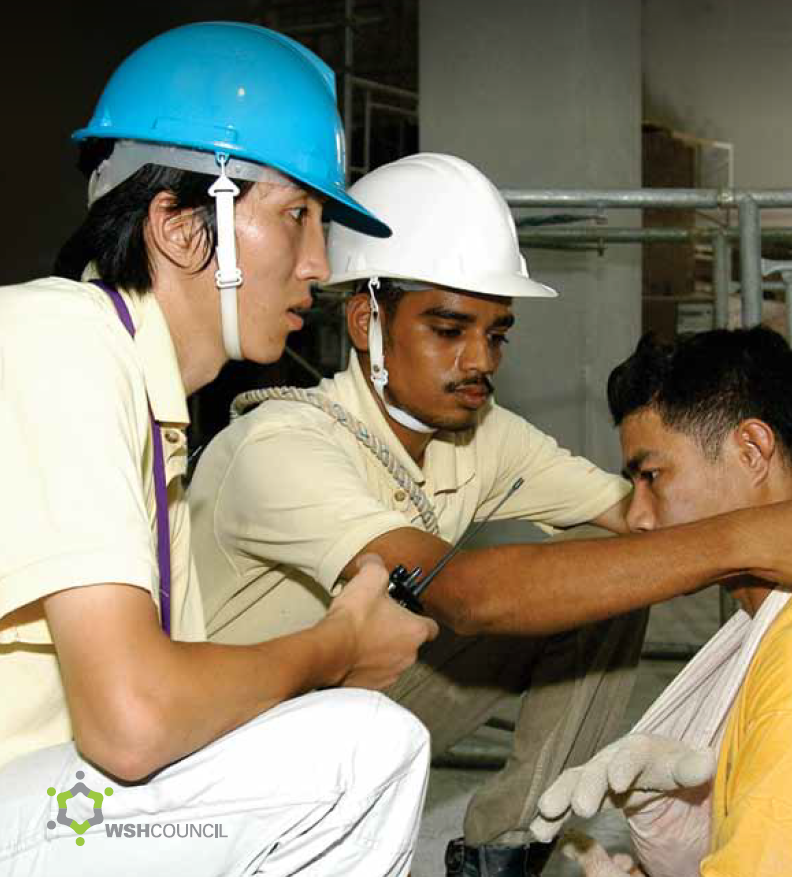
In this course, Investigating Workplace Incidents for SMEs, you will gain the essential skills needed to effectively manage workplace investigations. By the end of this course, you will be equipped to apply systematic information gathering techniques during workplace incidents, following precise guidelines to halt work, secure the area, and collect vital data. You will also understand the critical role that systematic incident investigations play, as outlined by the Workplace Safety and Health Council, and how risk assessments can prevent future workplace incidents. This knowledge will empower you to contribute to a safer work environment within your organization.

In the Tent-related Works Guideline course, you will learn how to effectively assess and implement risk controls to ensure safety when setting up tents. By understanding the Hierarchy of Control in risk management, you will be equipped to mitigate risks associated with tent-related activities. This course empowers you to confidently apply these principles, utilizing the detailed guidelines provided, to enhance both safety and efficiency in your tent installations.

In this course on Hospitality and Entertainment Industries, you will delve into the essential risk management strategies necessary for maintaining safety and health in these dynamic sectors. By the end, you’ll be equipped to conduct thorough risk assessments and implement effective control measures tailored to the unique hazards found within these environments. Additionally, you'll gain insights into summarizing specific hazards and describing appropriate preventive measures, empowering you to engage in ongoing reviews that ensure workplace safety and compliance.

In Improving Ergonomics in the Workplace, you will learn to apply essential ergonomic principles, equipping you with the skills to redesign lifting tasks tailored to entry-level workers. With a focus on minimizing the risk of work-related musculoskeletal disorders (MSDs), this course will enhance your understanding of proper techniques and the physical characteristics vital to workforce safety. By the end of this journey, you will confidently explain how ergonomics fundamentally contributes to reducing MSDs in lifting tasks, empowering you to foster a safer working environment.

Welcome to the Cleaning and Custodial Services course, where you will master the skills needed to maintain a safe and efficient work environment. By the end of this course, you will be equipped to implement safe work procedures and effectively utilize protective equipment in alignment with workplace safety protocols. You will gain a thorough understanding of the core responsibilities outlined in the Workplace Safety and Health (WSH) Act for both employers and employees. This knowledge will empower you to ensure a safe work environment and confidently use the necessary protective gear.

In this course, you will embark on a journey to master the essentials of managing Indoor Air Quality (IAQ) risks within your workplace. You'll learn how to effectively assess risk by identifying potential pollutant sources such as carpets and printers. By the end of this course, you will be equipped to propose practical solutions to mitigate these risks. Additionally, you'll gain a comprehensive understanding of the IAQ management programme framework, emphasizing the critical role of communication between facility managers and building occupants to ensure compliance with IAQ standards.

In this course, Workplace Safety and Health Guidelines Managing Safety and Health for SMEs in the Metalworking Industry, you will learn how to effectively apply risk management strategies to minimize workplace accidents. By identifying hazards and implementing the appropriate safety measures, you'll gain practical skills essential for creating a safer work environment. Additionally, you will understand fundamental principles of workplace safety specific to the metalworking industry and their critical role in accident prevention and productivity enhancement. Prepare to empower yourself with invaluable knowledge to sustain a safe and thriving workplace.

In this course, Safety Management Systems in the Metalworking Industry: A Guide to Audits and Compliance, you will gain the skills to conduct effective workplace audits and performance reviews. You will delve into the processes necessary to evaluate the operational effectiveness of current safety practices. By applying the key principles of ISO 45001:2018 standards, you will learn how to implement findings that drive continuous safety improvements and ensure compliance with workplace safety regulations. This knowledge is crucial for maintaining a safe and efficient working environment in the metalworking industry.

In this course on the Safe Use of Power Presses and Press Brakes, you will learn to master the crucial safety aspects of operating these powerful machines. By the end of this course, you will be able to identify and implement key engineering controls that are essential for safe machine operation, ensuring you can safely engage with equipment in the manufacturing and metalworking industries. You will gain the knowledge to describe various safety measures, including the role of guards, safeguarding devices, and emergency stops, that are designed to mitigate risks associated with using power presses and press brakes.

In the Safe Use of Machinery course, you will explore the importance of Workplace Safety and Health (WSH) guidelines in identifying potential hazards associated with machinery. By the course's conclusion, you will be empowered to apply these guidelines effectively, enhancing workplace safety through proactive strategies and informed decision-making. This learning journey will equip you with the knowledge to understand and prevent accidents, ensuring a safer operational environment.

This course provides comprehensive guidelines on maintaining workplace safety and health (WSH) standards during the maintenance of electric passenger and goods lifts. It covers risk management, identification of potential hazards, responsibilities of stakeholders, safe work practices, emergency preparedness, and incident reporting and investigation procedures.

In the "Working Safely During Maintenance of Electric Passenger and Goods Lifts" course, you will explore how to apply risk management techniques to enhance workplace safety. By delving into both routine and non-routine lift maintenance tasks, you will learn to identify and evaluate potential hazards effectively. This course empowers you with the skills needed to implement appropriate control measures, ensuring a safer environment during lift maintenance operations. You will gain the knowledge to explain the crucial role risk management plays in maintaining safety standards in your work.

Welcome to your comprehensive guide on Working safely during modernisation, installation, or dismantling of electric passenger and goods lifts. By the end of this course, you'll have the expertise to apply effective risk management strategies in lift modernization operations. You will learn to identify potential hazards and develop a robust mitigation plan to ensure safety and compliance with industry standards. You will also gain valuable insights into the components of risk management strategies specifically tailored to the installation and dismantling operations within the lift industry.

In the "Care Programmes for Healthcare" course, you will embark on a journey to enhance your ability to contribute to a safer healthcare environment. By the end of this course, you will be ready to apply the "Integrated Whole-of-System Approach" strategies, crucial for improving workplace safety and health and effectively responding to potential risks and emergencies. You will also gain knowledge of the key strategies employed in the CHEER Programme at Singapore Health Services, which help foster a compassionate work environment and address burnout among healthcare professionals.

In the "Basic Workplace Safety And Health (WSH) Training For Healthcare Sector" course, you will gain the essential skills needed to maintain a safe healthcare environment. By the end, you'll be adept at applying common hazard identification techniques to assess and mitigate potential risks, proactively preventing workplace injuries and illnesses. You'll thoroughly understand the various types of workplace hazards specific to healthcare settings, such as biological, chemical, and ergonomic threats, and you'll be able to summarize the recommended control measures for each type of hazard.

In this course, you will delve into the essential techniques for creating a psychologically safe environment at your workplace. By the end, you will be equipped to apply strategies that establish a robust workplace safety and health policy, emphasizing clarity and accessibility across all departments. You will learn how to identify the necessary steps for developing and communicating policies that showcase management's commitment to a safe and supportive work atmosphere. Prepare to transform your organizational culture by reinforcing trust and transparency in your policy-setting processes.

In the Workplace Safety and Health (WSH) Risk Management course, you will learn to expertly navigate the systematic risk management process, equipping yourself with the knowledge to proactively enhance workplace safety. By the end of this course, you will be capable of applying a structured approach to hazard identification and risk evaluation using the 5x5 risk matrix. Understand the steps of preparation, risk assessment, and risk control implementation, and develop the ability to assess potential workplace hazards in terms of their severity and likelihood. Dive into this course to empower yourself with effective strategies for maintaining a safer work environment.

In this course, you will delve into the crucial role of process safety in preventing catastrophic events within the chemical and petroleum sectors. You'll learn how process safety differs from personnel safety and its significance in reducing workplace incidents. By the end, you will be equipped to implement risk control measures based on performance data and safety management guidelines, particularly in smaller-scale plants and SMEs, enhancing the safety culture in your workplace.

Step into a world where safety meets precision in the realm of compressed air environments. This course, Compressed Air Works – Prevention of Compressed Air Illness and Barotrauma, equips you with the knowledge to recognize and understand the health hazards that come with working in these unique settings. You'll gain insights into potential diseases like decompression sickness and barotrauma, including symptoms and preventive measures. Ultimately, you'll master the emergency procedures to handle high-risk health situations, ensuring you can act swiftly to prevent or mitigate harm. This comprehensive guide empowers you to safeguard health and ensure prompt responses in emergencies.
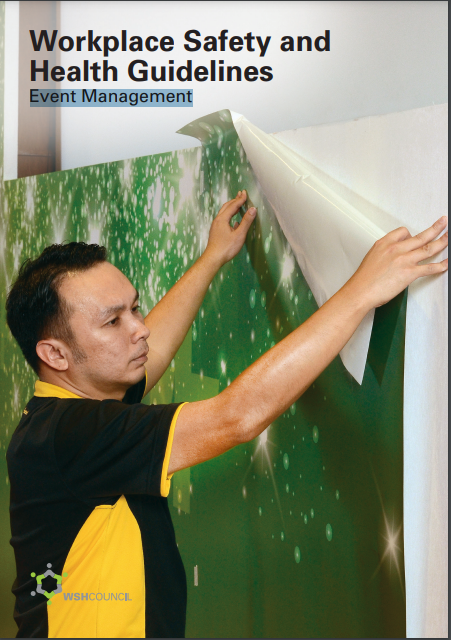
In the Event Management course, you will dive into the essentials of risk assessment and safety management tailored to the dynamic world of event management. By the end of this course, you'll be equipped to identify and mitigate potential hazards, ensuring you not only understand the diverse roles and responsibilities within an event but also actively contribute to a safe and secure environment. You'll gain valuable insights into how various stakeholders can collaboratively uphold safety standards, ensuring every event is managed with utmost care and responsibility.

In the "Contractor Management" course, you will delve into the intricacies of implementing Workplace Safety and Health (WSH) risk assessment techniques in real-world contractual settings. You will learn to expertly identify potential hazards and develop effective mitigation strategies within the scope of contractor management. By the end of this course, you will understand the crucial roles and responsibilities of both clients and contractors in maintaining compliance with workplace safety and health standards within contractual frameworks.

This course covers Workplace Safety and Health (WSH) guidelines for commercial diving, including risk management, dive planning, equipment safety, emergency procedures, and roles of diving personnel to ensure safe and compliant diving operations.

In the Fatigue Management course, you will learn how to apply essential principles to identify potential fatigue hazards within your organization. By evaluating fatigue-related risks and using provided risk assessment tools, you will be equipped to determine their significance and document your findings. You will also gain a comprehensive understanding of the factors contributing to fatigue and their potential impact on workplace safety and productivity. This course empowers you to propose effective control measures as part of a comprehensive workplace safety assessment plan.

In this course, you will learn how to manage heat stress in the workplace effectively. By the end, you will be equipped with the skills to apply risk assessment techniques to identify areas with high-risk heat exposure and propose control measures to mitigate these risks. You will also gain knowledge on preventive measures, including regular hydration and implementing work-rest cycles, to ensure a safe and comfortable working environment.

This course outlines critical safety practices for working in confined spaces, such as tanks, silos, and pipelines, focusing on hazard identification (toxic gases, oxygen deficiency, engulfment risks), mandatory safety measures (entry permits, ventilation, gas testing, and isolation procedures), proper use of personal protective equipment (PPE), emergency response planning (rescue protocols and equipment), and the roles of personnel (entrants, attendants, supervisors, and rescuers) to prevent accidents and fatalities in high-risk environments, in compliance with Singapore’s Workplace Safety and Health Council standards.
Skip course categories

